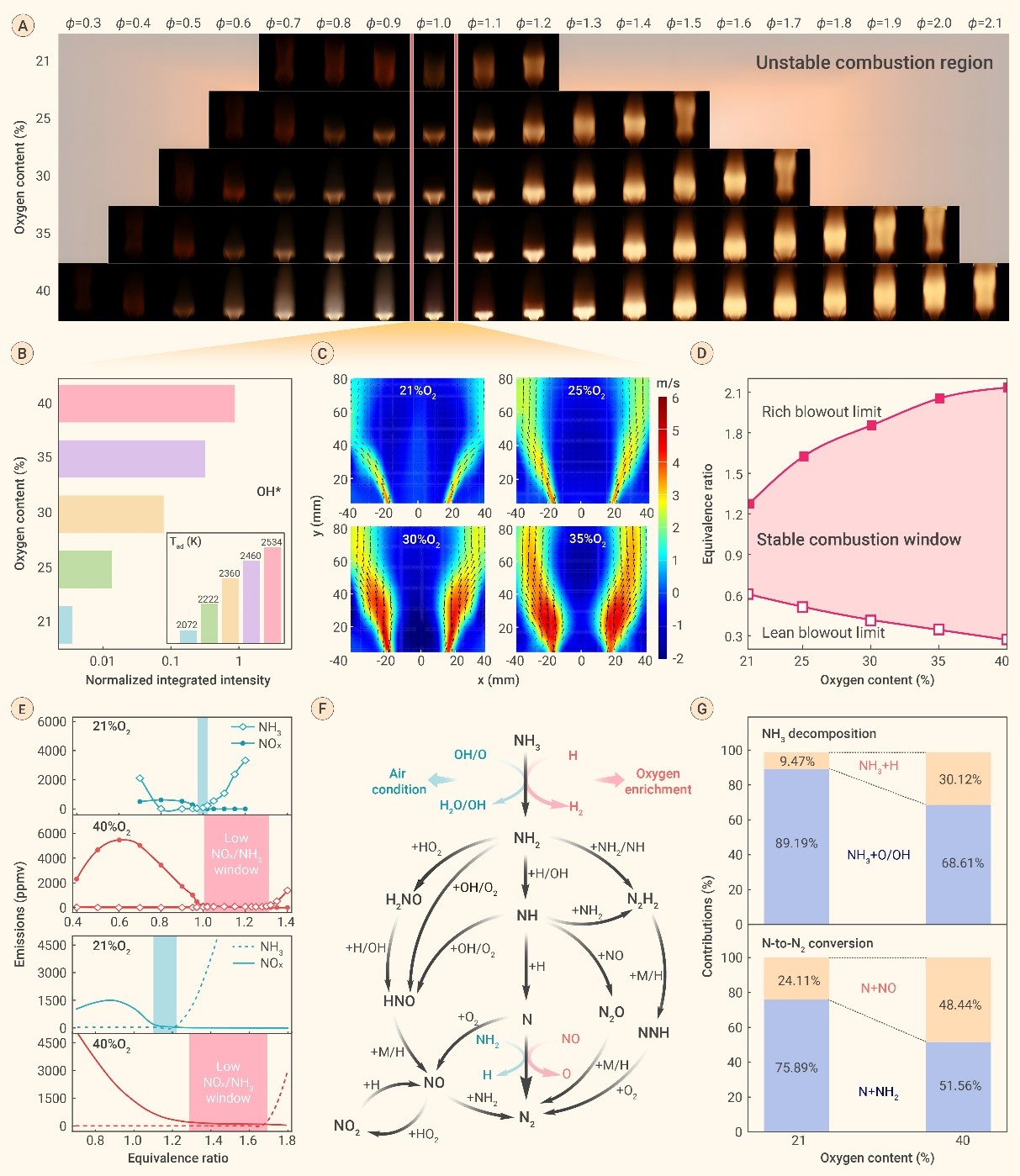
News

News
Recently, Prof. Yuyang Li’s research group from School of Mechanical Engineering at Shanghai Jiao Tong University published a paper titled Self-promoted fuel pyrolysis under oxygen enrichment enables clean and efficient ammonia combustion in The Innovation Energy, a leading international journal in the energy field. The research reveals that oxygen enrichment significantly enhances the self-promoted pyrolysis of ammonia in flames, thus overcoming the challenge of simultaneous combustion enhancement and pollutant control. The first author is Zundi Liu, a PhD candidate, and the corresponding authors are Prof. Yuyang Li and Asst. Prof. Wei Li.

Ammonia (NH3) is one of the world’s most important chemical products and has serves as a novel carbon-free fuel and an efficient hydrogen (H2) carrier. In addressing the two major challenges of high pollution emissions and low reaction reactivity in ammonia combustion, researchers have discovered the thermal deNOx mechanism by residual fuel under ammonia-rich conditions, observed a low NOx/NH3 emission window of equivalence ratio (ϕLE), and proposed various fuel-side combustion enhancement strategies, such as reactive fuel co-firing and pre-cracking. Previous studies have shown that the ϕLE width for ammonia combustion is extremely narrow (0.01-0.06). Under the influence of fuel-side enhancement strategies, there is a severe challenge of the trade-off between combustion enhancement and pollution emissions. Consequently, achieving simultaneous combustion enhancement and pollutant control at this stage remains a long-standing and elusive “Holy Grail” challenge in ammonia energy conversion.
Prof. Yuyang Li’s research group proposed an oxygen-enrichment strategy for ammonia combustion in their 2019 Combustion and Flame paper. They found that only doubling the oxygen content in the oxidizer increased the laminar burning velocity of ammonia fivefold, reaching levels comparable to those of natural gas/air combustion in practical gas turbines. However, previous experiences in hydrocarbon combustion suggested that increased flame temperatures, typically hundreds of Kelvin, under oxygen enrichment could significantly intensify NOx emissions, raising concerns about the potential trade-off between combustion enhancement and pollutant control. To address this issue, the research team investigated ammonia combustion under oxygen enrichment in a single swirl gas turbine model combustor and observed a significant increase in NOx emissions under fuel-lean conditions and a surprising widening of the low NOx/NH3 emission window under fuel-rich conditions. As the oxygen content increased from 21% to 40%, the stable combustion window of equivalence ratio for ammonia swirl flames expanded nearly threefold, from 0.66 to 1.86, while the ϕLE simultaneously increased over sixfold, from 0.05 to 0.31. Kinetic analysis revealed that under air conditions, the ϕLE width was determined by the sufficient reaction between residual fuel and NOx, while under oxygen enrichment, the significantly increased flame temperature enhanced the self-promoted ammonia pyrolysis, promoting an overall increase in fuel pyrolysis rate and suppressing residual NH3 emissions under fuel-rich conditions, thus significantly widening the ϕLE and achieving the simultaneous pollutant control during combustion enhancement under single-stage gas turbine combustion conditions. In the future, further integration with staged combustion techniques could effectively remove residual hydrogen gas in the secondary combustion zone, thereby creating a highly efficient and clean ammonia combustion technology with broad application prospects.

Experimental and modeling analysis of air combustion and oxygen-enriched combustion for ammonia
The Innovation Energy is the latest sister journal of The Innovation, founded by the Youth Innovation Promotion Association of the Chinese Academy of Sciences. It aims to report on cutting-edge breakthroughs and technological innovations in the field of energy.
Paper Link: https://www.the-innovation.org/article/doi/10.59717/j.xinn-energy.2024.100006

Shanghai Jiao Tong University
Address: 800 Dongchuan Road, Shanghai
200240